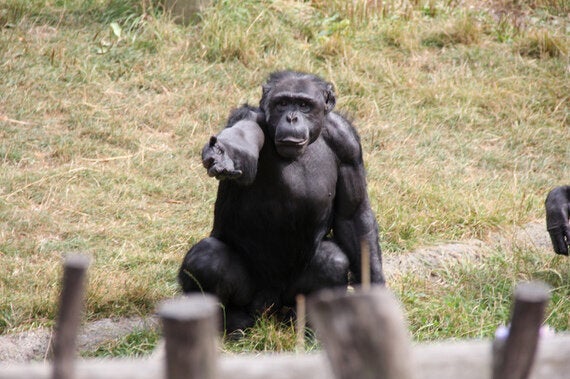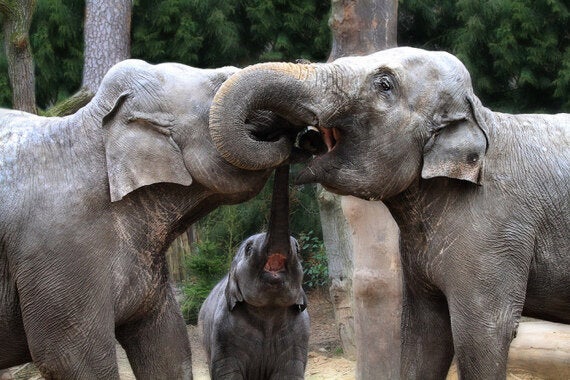A handshake, a kiss on the cheek, a bow... We humans have many different ways of greeting each other, depending on context and culture. Animals, too, have a huge variety of greetings, some eerily similar to ours and some specific to their species. Here are the different ways in which animals say "hello" to each other.
Chimpanzees: little humans in every way

Image courtesy of Gabriel Pollard
Everyone knows how similar chimpanzees are to humans, from their genetics to their appearance, the use of tools and social structure. It's therefore no surprise that their greetings should also be close to ours: chimpanzees typically touch palms, hug and sometimes kiss as a form of greeting. Some chimpanzees can also learn simple sign language, allowing a more complex communication between our species, though they can only form simple noun-verb-object sentences.
You may not know that: While communicating, chimpanzees activate an area in their brain comparable to Broca's area, a key language centre in human brains.
Giraffes: always neck and neck

Image courtesy of hyper7pro
A giraffe's neck can reach 2 meters in length, making it a major feature of its body. Male giraffes typically entwine their neck with each other's, swaying and rubbing, to assess the other's strength and size in a behaviour called "necking". If this is not enough to assert dominance, they can then engage in combat, exchanging swings and blows.
You may not know that: After necking, males will commonly court and mount each other.
Dolphins: a conversation between representatives

Image courtesy of Jay Ebberly
Dolphins communicate mostly with whistles, which they can hear from a distance of many miles. Each dolphin appears to have a unique individual whistle, which may act to convey information on age, sex, health and reproduction status. Dolphins in groups meeting another group seem to choose a representative member who will communicate with a single individual from the other group, often before joining up and travelling together in silence.
You may not know that: Dolphins, unlike non-human primates, can invent and copy new sounds, effectively learning a new language.
Elephants: a well-rounded communication system

Image courtesy of Jinterwas
You may not know that: Elephants can emit infrasonic calls, as well as seismic vibrations transmitted to their middle ear, both particularly useful for long range communication.
Interested and want to know more? Wildlife conservation is a great way to study animal behaviour and learn more about their methods of communication. Why not work at an elephant sanctuary in Thailand, help conserve the dolphin populations of Greece, or spend some time with Tanzanian wildlife?
Check out Frontier's blog 'Into the Wild' where you can read more articles like this!
